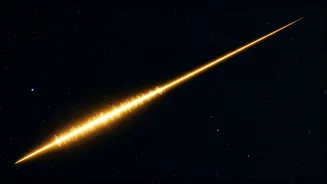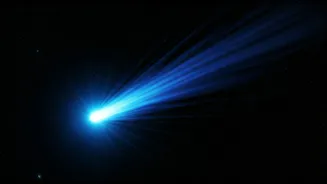The Viral Claim
The central claim revolves around a signal purportedly emitted by 3I/ATLAS, characterized by a specific pattern. This pattern supposedly consists of a series
of pulses with durations or intervals that are related to the Fibonacci sequence. The sequence, known for its appearance in nature and mathematics, is presented as 8 • 13 • 8 • 5 • 13 • 8 pulses at 1420 MHz. This specific combination has captured the attention of many individuals. The widespread propagation of this claim, primarily through social media platforms, has sparked curiosity and debate. It is crucial to examine the evidence and context surrounding this claim. The assertion itself requires validation, which includes determining the nature of the signal and verifying its origination.
Fibonacci Sequence Explained
The Fibonacci sequence is a series of numbers in which each number is the sum of the two preceding ones, typically starting with 0 and 1. The sequence begins as follows: 0, 1, 1, 2, 3, 5, 8, 13, 21, and so on. This sequence is observed in various natural phenomena, from the arrangement of petals on a flower to the spiral patterns in a pinecone. Its prevalence has sparked interest in its connection to various scientific disciplines. The appearance of the Fibonacci sequence in the context of the 3I/ATLAS signal has ignited speculation about possible hidden meanings or origins, prompting researchers and enthusiasts to explore potential underlying mechanisms.
The Significance of 1420 MHz
The 1420 MHz frequency holds significant importance in astrophysics. This is the frequency at which neutral hydrogen atoms emit radio waves. The radio waves emitted from hydrogen atoms are frequently used by astronomers to study the distribution and motion of hydrogen throughout the universe. This frequency serves as a reference point for searching for signals that may indicate the existence of extraterrestrial intelligence. A signal detected at this frequency, with an unusual pattern, would naturally draw considerable attention from the scientific community. The use of the 1420 MHz frequency, combined with the Fibonacci sequence, has led to numerous interpretations and discussions regarding the likelihood of the signal's origin.
Investigating 3I/ATLAS
3I/ATLAS itself requires careful investigation to assess the validity of the signal claim. The scientific community has to examine the observational data, equipment used, and methodology to confirm the signal's existence. The details of the observation, including data processing and interpretation, must be analyzed. Independent verification by different observatories or researchers is critical to reinforce any findings. Additionally, it is essential to determine whether any potential interference or noise could be responsible for creating the observed pattern. The rigorous scientific process is crucial for distinguishing between actual signals and spurious results. A thorough investigation should ascertain the capabilities and activities of 3I/ATLAS and the specific circumstances under which the signal was supposedly detected. It needs to provide a complete understanding of how the observations were made and what was actually measured.
Decoding the Viral Claim
The viral nature of the claim, combined with the intriguing pattern of pulses, has made it a subject of extensive discussion. A large audience is engaged in this discussion on various social media platforms. The interpretation of the signal is likely influenced by the observer's background, scientific understanding, and personal beliefs. It is important to emphasize that speculation is part of the ongoing analysis of such claims. It is also important to carefully assess all available information and avoid jumping to conclusions. The validation process, involving careful analysis and verification, is critical in scientific investigations. This process helps separate factual observations from unsupported claims.










